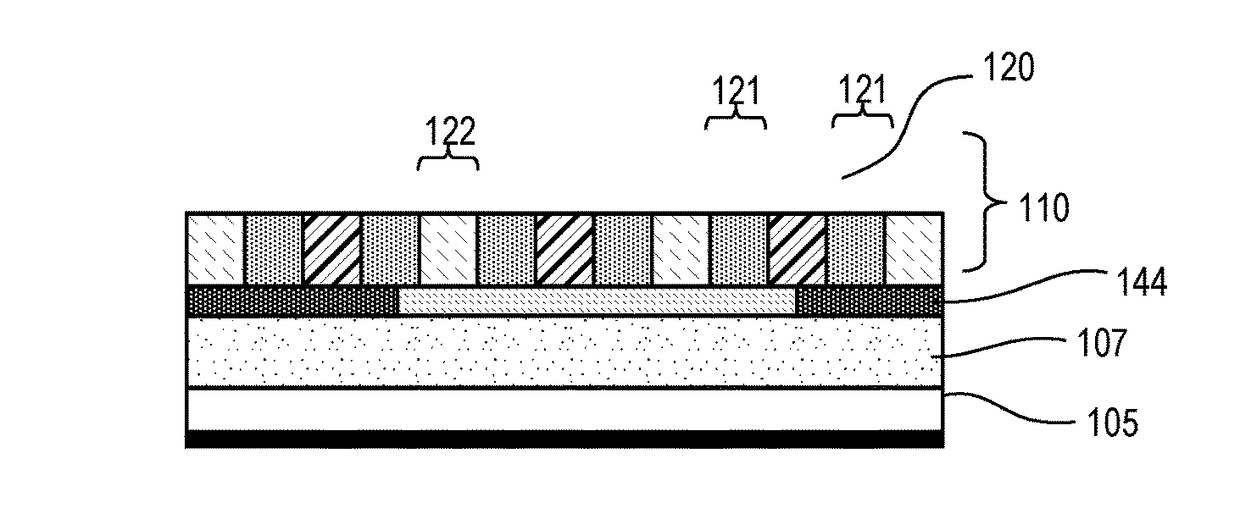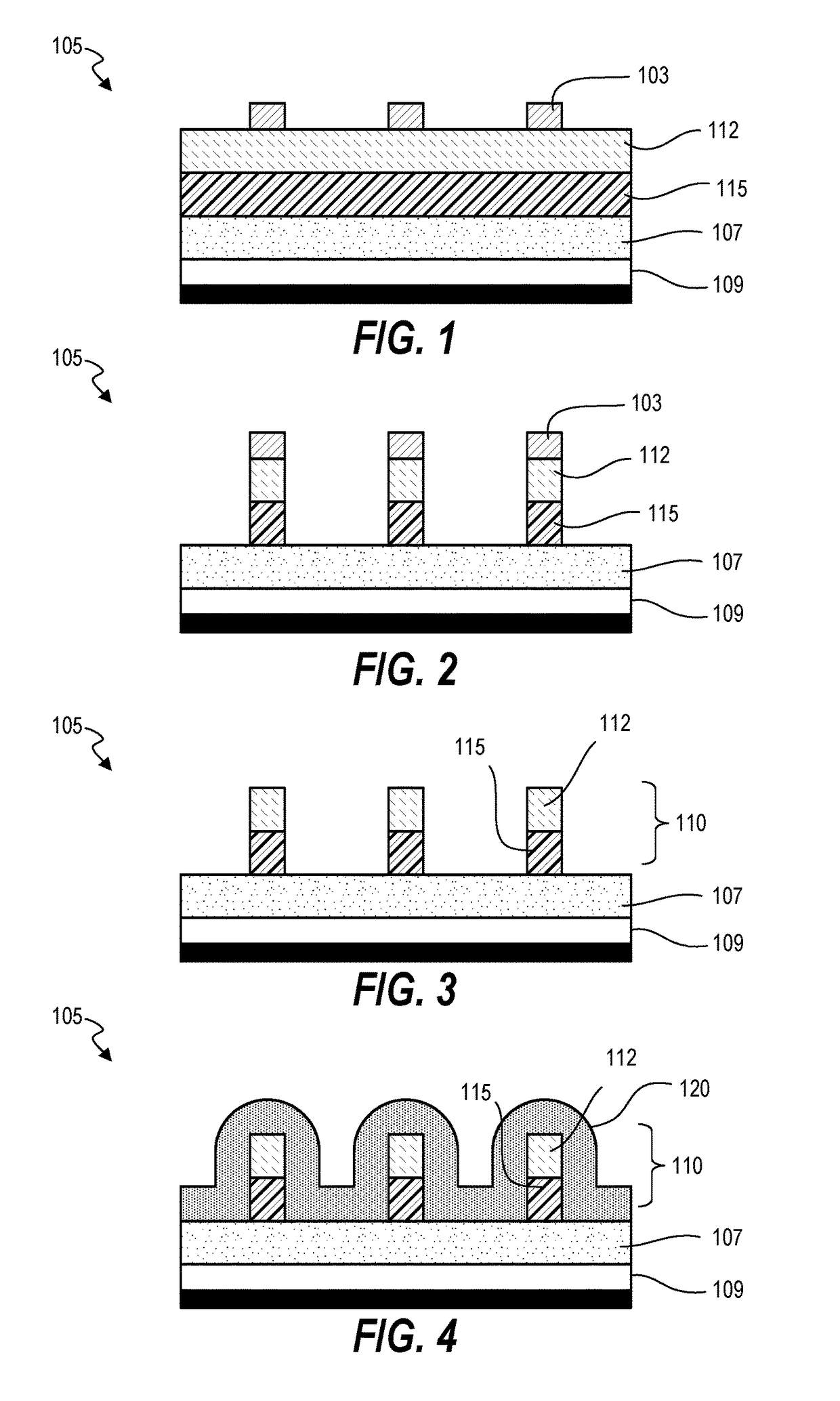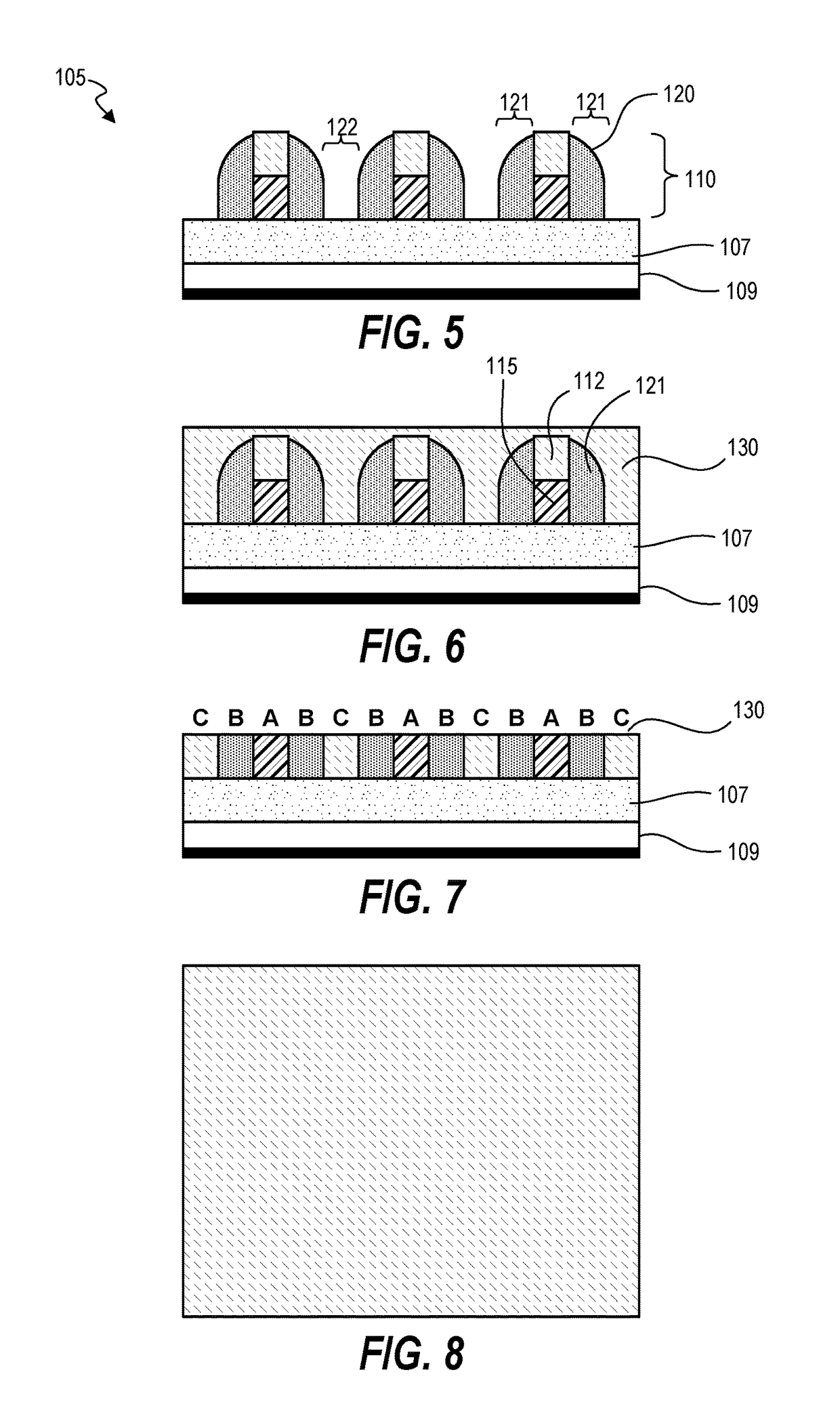Method for Patterning a Substrate Using a Layer with Multiple Materials
- Summary
- Abstract
- Description
- Claims
- Application Information
AI Technical Summary
Benefits of technology
Problems solved by technology
Method used
Image
Examples
Embodiment Construction
[0019]Techniques disclosed herein provide a method for pitch reduction (increasing pitch / feature density) for creating high-resolution features and also for cutting on pitch of sub-resolution features. Techniques herein include forming bi-layer or multi-layer mandrels and then forming one or more lines of material running along sidewalls of the mandrels. The different materials can have different etch characteristics or resistivities to be able to selectively etch one or more of the materials to create features and create cuts and blocks where specified. The multiple materials can be a pattern of alternating, sub-resolution lines, and each line can be preferentially etched relative to the other lines. Etching using an etch mask positioned above or below this multi-line layer further defines a pattern that is transferred into an underlying layer. Having a mandrel of two or more layers of material enables one of those materials to be sacrificial such as when etching a spin-on reversal...
PUM
 Login to View More
Login to View More Abstract
Description
Claims
Application Information
 Login to View More
Login to View More - R&D
- Intellectual Property
- Life Sciences
- Materials
- Tech Scout
- Unparalleled Data Quality
- Higher Quality Content
- 60% Fewer Hallucinations
Browse by: Latest US Patents, China's latest patents, Technical Efficacy Thesaurus, Application Domain, Technology Topic, Popular Technical Reports.
© 2025 PatSnap. All rights reserved.Legal|Privacy policy|Modern Slavery Act Transparency Statement|Sitemap|About US| Contact US: help@patsnap.com



